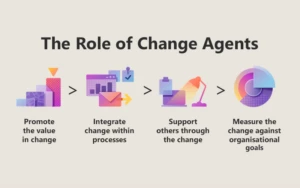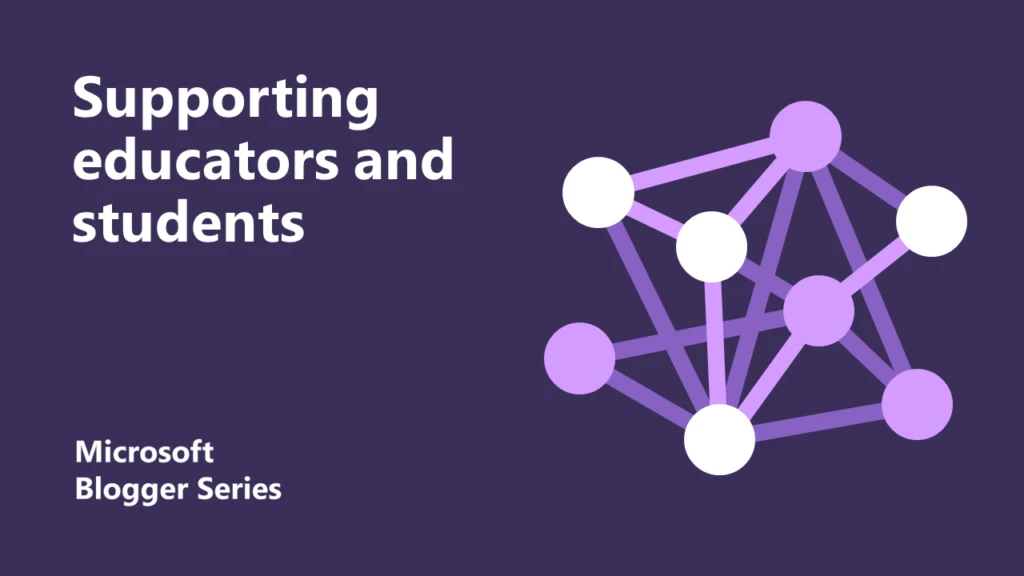
How to develop a chatbot to support your educators and students
The ever-growing potential of chatbots in education is now being explored and evaluated across the sector. Given the accessibility of Power Apps, Power Virtual Agents and App Studio, it is no longer necessary to learn how to code to get started with creating your first chatbot in Microsoft Teams.
Following our simulated hospital event at UCLan in May 2020, I built a selection of chatbots using Power Apps. These were developed with the primary purpose of increasing fidelity within online simulation for our health and social care students. I wanted to explore how to automate and standardise parts of the simulation, to help with quality and control from the facilitator’s perspective.
Creating and developing a chatbot
To create a chatbot, I used Power Apps. I first selected Create under the left hand Chatbots heading, and then worked on developing the language behind the bot.
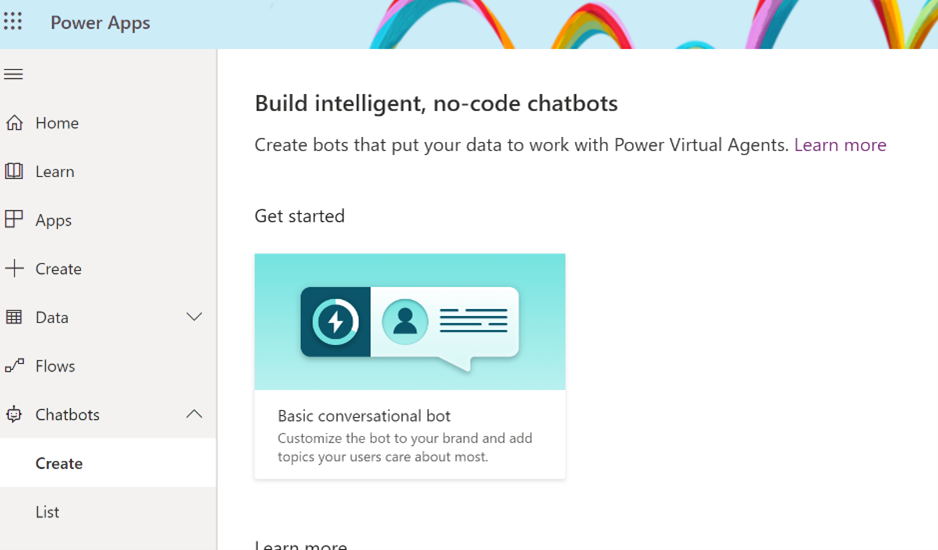
To get started I’d recommend using Microsoft Whiteboard or some paper to map out the language according to what you want the bot to ask and respond with. Try to draw on the direction of the conversation, and how you want it to start and end. Spend some time exploring existing tutorials found in Power Apps, Power Virtual Agents, Azure, and LinkedIn Learning.
If you’re not sure where the bot will be deployed just yet, consider starting in Power Apps. This will make it possible to save it and then ‘sideload’ into a Team, or to embed the bot into another web site or resource. Follow the Microsoft Power Apps Community for Q&A and problem solving tips to help you along the way.
Once created, you can proceed to Publish the chatbot, following any further instructions.
Taking a student-centric approach
It’s also important to consider the different types of chatbot that can be created when looking to develop your own. In our case, this helped shape how the bots would be used and where they would ultimately be deployed. Here are three different types of chatbots and examples of how we have used them at UCLan.
1- Repetitive prompter chatbot
Within one online OSCE for our MSc Occupational Therapy students, there are four tasks. The elements of each task became the most asked question, both across the module and leading up to the OSCE. Students understood the tasks but often couldn’t retain which order they were in, and whether these were live or recorded. I created a ‘repetitive prompter’ style chatbot for the module, and we have had real success embedding and deploying it within the assessment space. This is quite an exciting development for me, as it reinforces the benefits of investing in time in chatbots – particularly due to the potential of them being embedded within other Virtual Learning Environments. You can also lift this type of chatbot and place it within your Microsoft Teams space.
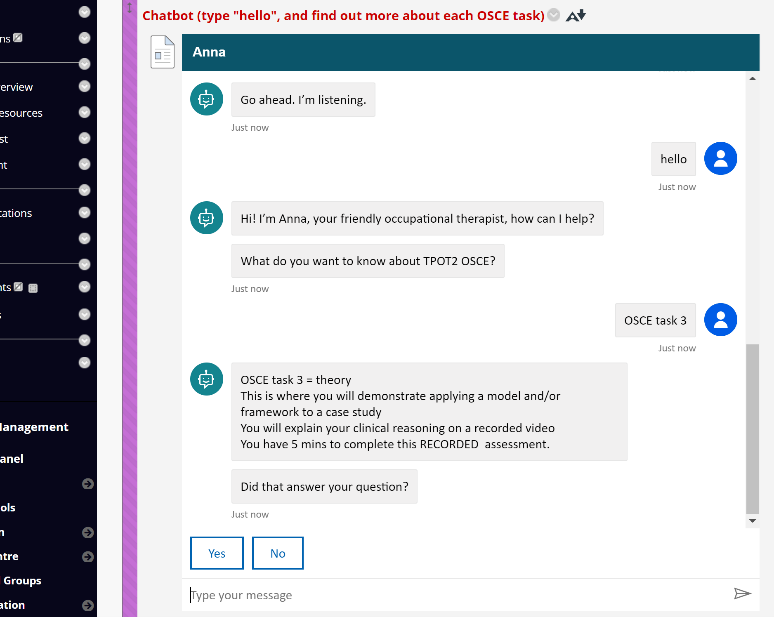
2- Reflective prompter chatbot
Our debrief chatbot for IPE online simulation was a collaboration between my colleague Abhi and I. Abhi came up with the language for the chatbot, and I then programmed and published it in Power Apps, using the demo link as a Website tab in Microsoft Teams. This was for a large-scale simulation, with 300+ people within three Teams environments on the one day. This was the first cross-faculty IPE event which had been run online whilst students were studying from home. Subsequent feedback from students and staff has since provided valuable insight into further development for future events. With growing interest in online simulation, we created a Team purely for staff to collaborate around simulation ideas. This has proved really useful, as the bots are now becoming shareable assets across our wider organisation.
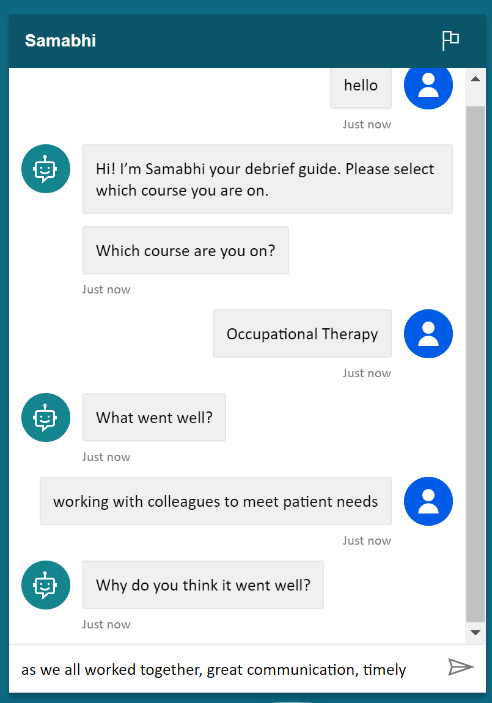
3 – Role-specific chatbot
Development of role-specific chatbots started from reflections about how to part-automate online simulation, and also the possibility of deploying a series of chatbots within an online simulation to work as simulated characters within the Microsoft Teams environment. I created a couple of ‘patient’ chatbots, including ‘George’- who needs the toilet. If you don’t respond appropriately, he (understandably) becomes very angry, upset and intends on placing a complaint. I am currently developing another simulated hospital event for 2021 and intend for this to be an IPE activity.
Here is an example of a nurse chatbot which we deployed into a large-scale IPE simulation for a colleague.
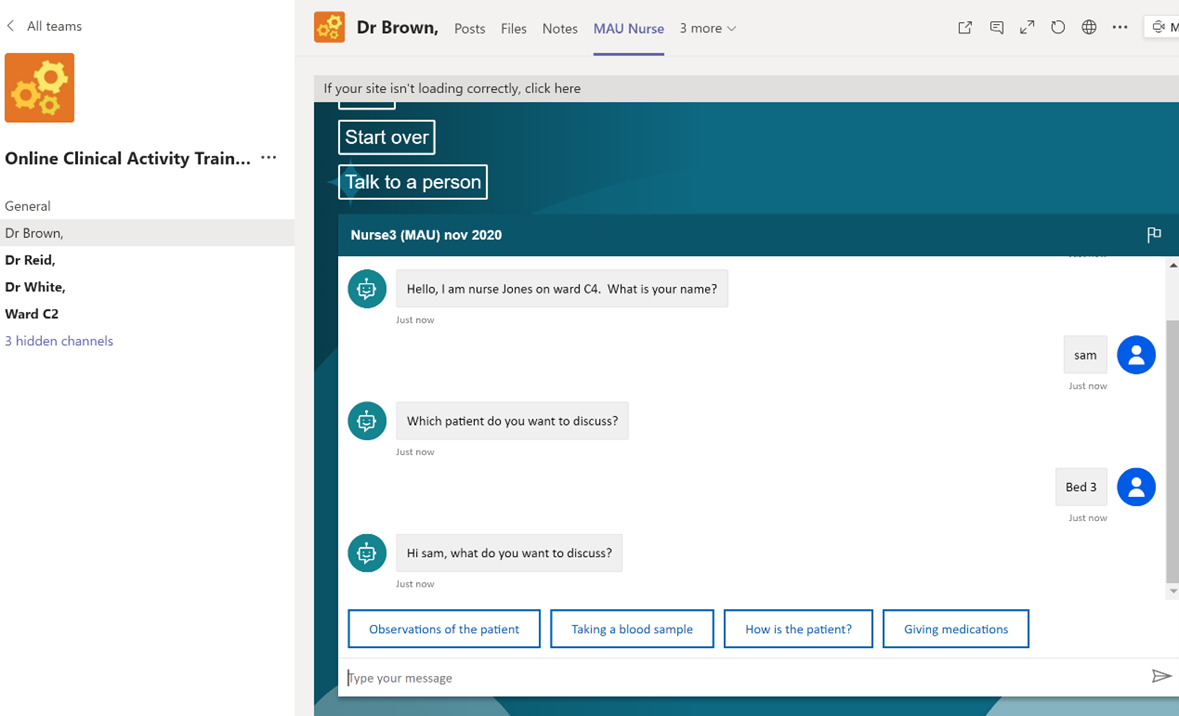
MAU nurse chatbot embedded into Microsoft Teams as a tab, using the demo function of publishing (pilot ‘role-specific’ chatbot).
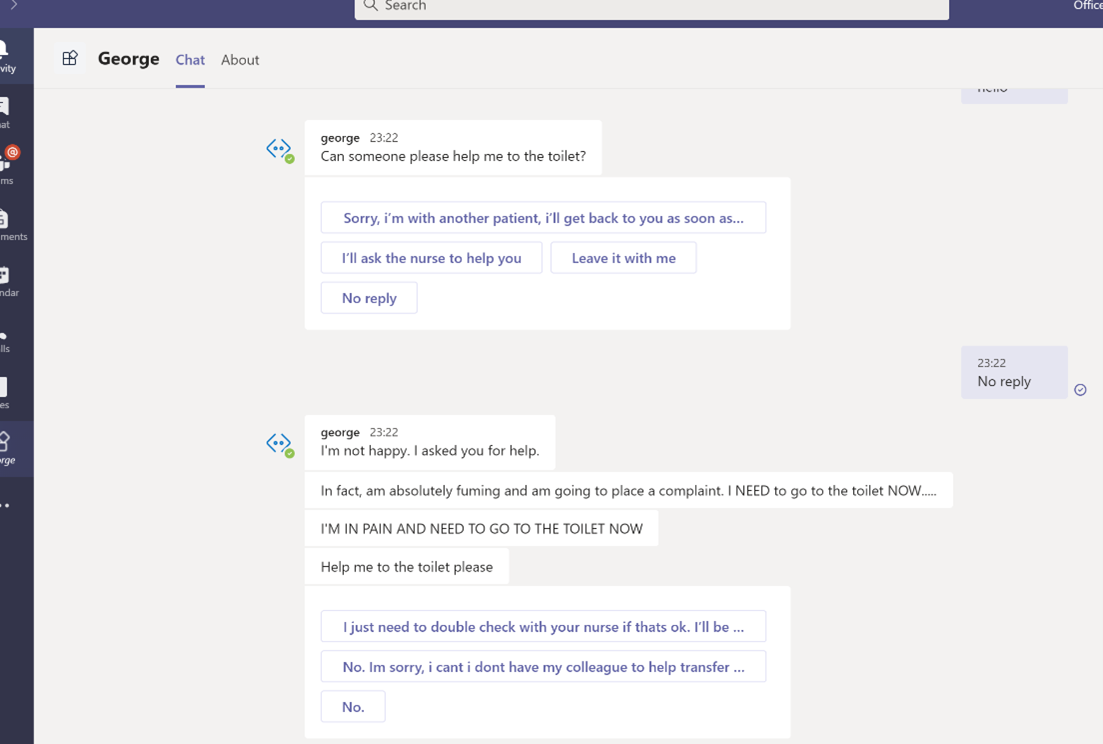
‘George’ bot deployed as private message (e.g. 1:1 with a student).
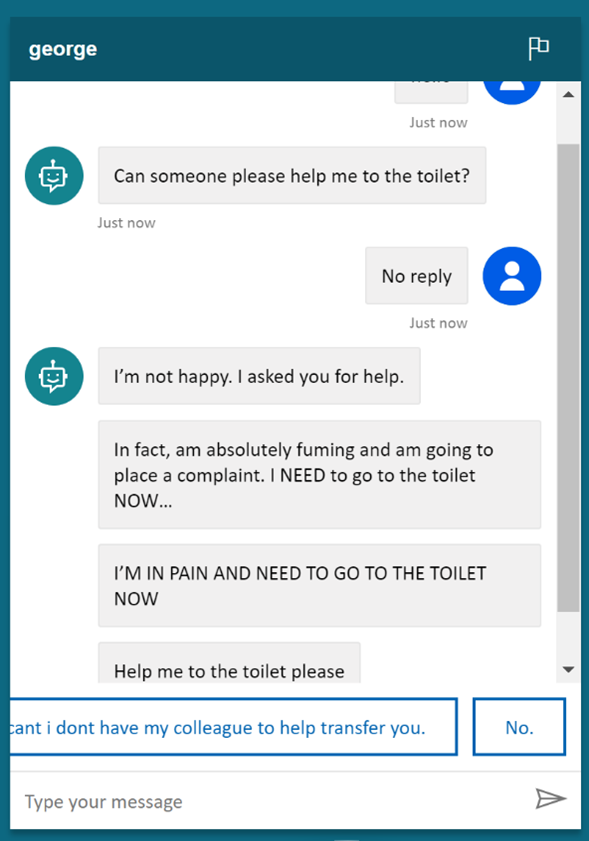
‘George’ bot deployed within a Teams channel. Students are working together on a ward, George distracts them, and then the students are tasked to complete the scenario.
Looking ahead
Having successfully deployed chatbots at a local level, we are now looking at the possibility of wider publishing to the organisations app catalogue in Microsoft Teams. Bots could then be selected by other users, and once deployed, would appear as 1:1 chats.
We have no doubt that 2021 and beyond will highlight an increased appetite in the part-automation of a number of day-to-day tasks undertaken by educators, and this is something we will continue to both explore and evaluate.
Find out more
Creating chatbots for online simulation
App Studio: Creating chatbots in Microsoft Teams
About the author
Sam Pywell is a Lecturer in Occupational Therapy at the University of Central Lancashire, and an Associate Fellow of the Higher Education Academy. Sam has recently led development of chatbots in online simulation for health and social care students using Microsoft Teams. She is an MIE Expert, DigiLearn Champion and Key Contributor to the DigiLearn Sector community. You can follow her on Twitter @smileyfacehalo.



